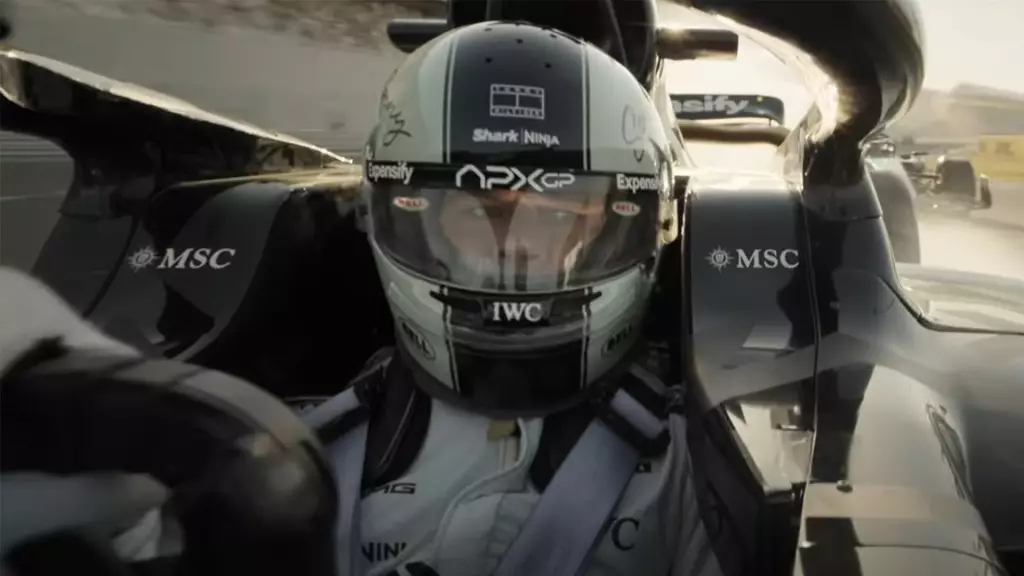Apple’s recent blockbuster success with *F1* signals a profound shift in the landscape of big-budget theatrical releases from tech giants. Historically, Apple Originals have struggled to translate their glossy streaming productions into box office gold. Just last summer, *Fly Me to the Moon* barely made a ripple despite a $100 million budget, and films such as *Wolfs* fizzled into obscurity. Enter *F1*, an ambitious Formula One racing epic produced by Jerry Bruckheimer and directed by Joseph Kosinski, which smashed expectations with a staggering $55 million-plus opening weekend in over 3,600 theaters. This doesn’t just break records for Apple’s original films; it establishes Apple—as a cinematic contender capable of commanding wide theatrical audiences.
This milestone shouldn’t be taken lightly. It’s a dramatic comeback and a renunciation of Apple’s previous theater hesitancy. The film’s early Friday gross alone eclipsed the entire three-day opening window of Martin Scorsese’s *Killers of the Flower Moon*, another Apple-backed effort that ultimately landed with respectable but unspectacular final box office numbers ($68 million domestically). It’s clear Apple now understands what audiences want in the multiplex: big, bold programs with universal appeal.
Why *F1* Revved Up Motor Sports’ Box Office Revival
The resurgence of motor sports cinema owes much to *F1*’s strategic appeal. The success isn’t coincidental. Formula One, unlike many niche sporting properties, boasts an intensely passionate, widely globalized fan base—a rare commodity in an era where localized sports often dominate domestic theaters only. This international magnetism underpins the film’s estimated global haul surpassing $115 million, thanks to synchronized worldwide releases and Warner Bros.’ marketing muscle.
Brad Pitt’s star power adds to the equation, elevating this to his second-best opening as a leading man since *World War Z* in 2013. The film’s substantial 30% share of the coveted 13-24 demographic—an audience often elusive to prestige or period pieces—further reveals sharp targeting. *F1* avoids the trap of appealing solely to older cinephiles or racing fans; it bridges generations and social groups.
From a marketing perspective, the social media footprint is staggering. With over 845 million combined impressions on TikTok, Instagram, YouTube, Facebook, and X, *F1* outranks heavyweights like *Fast X* and nearly matches *Mission: Impossible – Dead Reckoning*’s digital chatter. Such metrics are invaluable to the studio, underpinning sustained momentum beyond opening weekend.
Lessons from the Missteps of Summer Horror Counterprogramming
Contrast *F1* with the underwhelming performance of *M3GAN 2.0*, a sequel in a once-promising horror franchise. Despite a modest $25 million production budget—less than half of *F1*’s—the film struggles to breach $20 million at the box office, stumbling out of the gate with only $4.3 million on Friday from 3,100 theaters. The sequel’s tepid reception, with critics lowering their approval from 93% for the original to a lukewarm 59%, underscores the perils of relying too heavily on gimmicks like robotic scares and franchise fatigue.
This kind of counterprogramming strategy, targeting horror-hungry audiences during summer blockbusters, often proves to be a risky bet. Unlike *F1*, which harnessed global passion and established star clout, *M3GAN 2.0* lacks the universal draw and robust backend marketing. The numbers reflect a fatigued market segment and a franchise that failed to innovate or recapture its initial magic.
The Pragmatism of Production Costs Versus Marketing Genius
One valuable insight from the *F1* phenomenon pertains to the balance of investment and marketing efficacy. With production budgets rumored around $200 million, some critics alarmed by whispers of $300 million, the film entered an expensive arena. Yet the meticulous co-financing partnership between Apple and Warner Bros., including a 50/50 split on global prints and advertising, showcases a pragmatic alliance that leverages each company’s strengths without unnecessary expenditure.
The distribution structure also exemplifies smart financial management, with the Burbank-based Warner Bros. taking a modest 8% distribution fee only after Apple and Warner Bros. recoup P&A. This efficient funneling contrasts sharply with bloated budgets and opaque accounting that often doom mid-tier tentpoles.
Here lies an implicit rebuke of Hollywood’s inflated production costs: a big budget alone doesn’t guarantee success. Strategic brand partnerships, targeted demos, and global appeal can propel a film to profitability despite eye-watering expenses.
Why Apple’s F1 Is a Template for Center-Right Cinematic Success
From a center-right liberal vantage point, *F1* embodies the virtues of entrepreneurial risk-taking, savvy internationalism, and meritocratic star power that the modern entertainment industry often neglects. It is refreshing to see a film unafraid to celebrate competition and high performance—a cinematic celebration of industry, skill, and innovation without pandering to overly ideological narratives.
The film’s marketing and distribution strategy are rooted in free-market principles: recognizing consumer demand across borders, empowering star talent like Pitt, and letting the product speak for itself via organic social media buzz. Apple’s willingness to embrace big theatrical gambits while respecting audience preferences marks a welcome recalibration in an environment too frequently dominated by woke messaging and niche catering.
In sum, *F1* offers a road map for how big tech-backed cinema can succeed in traditional venues. It understands market forces, prioritizes universal storytelling over niche ideology, and ignites genuine excitement. This isn’t just a win for Apple or Warner Bros.—it’s a win for cinematic storytelling that values risk, reward, and the global audience hungry for quality spectacle.

